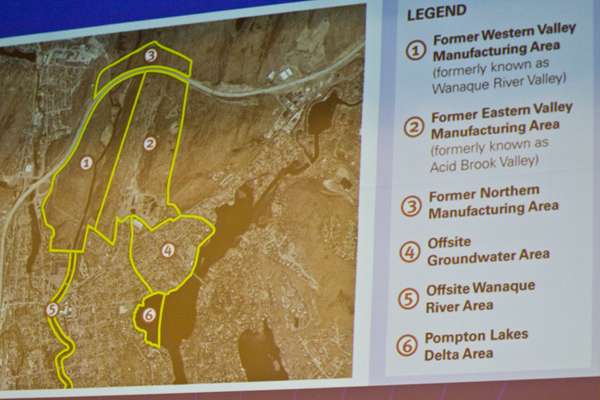[1/30/10 Update #1 below]
[Update #2 – 1/31/10 Bergen Record follows my lead with a good story, but crappy headline: NJ Gov. Christie’s transition team has harsh words about state’s environmental department
[Update #3 – 2/6/10: DEP rules under review, agency’s fate uncertain – Slammed By Transition Report By TODD B. BATES – ENVIRONMENTAL WRITER – February 6, 2010 – end update]
In my singular focus on economics, I failed to make an important point in yesterday’s post on the intellectual dishonesty of the Christie Environmental Protection Transition Report.
In addition to using the economic recession to scapegoat DEP and environmental protections, the Report actually blames DEP – not the developers and industrial polluters – for harming the environment. So DEP is killing the economy and the environment too!
Starting in the first paragraph, the Report lays its twisted assumptions and radical dismantling policy agenda right on the table:
When the Department of Environmental Protection Transition Subcommittee began its intensive investigation five weeks ago into how the Department operates, based on our collective experiences we were skeptical if it could possibly be reinvented and survive. The Department has created cumbersome, confusing and often conflicting regulations that in some cases go beyond legislative intent, and in others, have no enabling legislation at all.
Transition team members openly admit that they were skeptical and wondering if DEP could survive – in other words, they were considering abolishing DEP.
And exactly like the lies about DEP’s role in the economic recession, by claiming (without identifying a single case) that DEP rules go beyond legislative intent and lack enabling authority, the Report lies about DEP’s legal and regulatory policy. The Legislature has Constitutional authority to veto any DEP rule that is inconsistent with legislative intent.
They have never done so.
Similarly, the Report cites none and I can’t recall a recent NJ court decision that found that DEP regulations were ultra vires and lacked enabling legislation (with partial exception of the Court decision on the CAFRA public access rule, which is cited appropriately).
But the Report plows on, in similar false, misleading, and fact free mode:
The Department has failed to fulfill its own mission statement of protecting our State’s vital natural resources while taking into consideration economic vitality. …
Simply put, the DEP must “do less with less” and do it better.
Yes, that was rather simply – or let’s say simplistically – put.
Aside from mis-stating the mission of DEP (i.e. it is not DEP’s statutory mission to promote or consider “economic vitality“, which is a slogan not found in any environmental law on the books), the Report is grossly out of touch with the people of NJ who want MORE environmental protection, not less (virtually all issue polls say this).
In concert with Christie’s Executive Orders 1-4 and his nomination of a DEP Commissioner with zero environmental experience or expertise, this represents a truly radical departure from NJ’s bipartisan support for strong environmental and public health protection.
So why are we not hearing howls of protest from NJ’s environmental community?
Where is the Minority Transition Report? The NJ Environmental Federation (NJEF) was represented on the Transition Team and their organizational name endorses the Report. Do they agree with the Report’s recommendations? Or is NJEF keeping their powder dry in hopes of appeasing Christie as his anti-environmental runaway train steamroller builds even more momentum as the economy continues to tank?
Where are the critical analyses of Christie’s Executive Orders? All I’ve seen is the Sierra Cub’s Bergen Record Op-Ed.
Where are the “action alerts” and State House press conferences? Where are the Democrats? Where are the moderate pro-environmental Republicans? Where is CWA Local 1034 that represents DEP professionals? Where is the media?
Shortly after reading the report, I read a January 22 story in the Star Ledger about a dispute about another Christie Transition Team. According to that story, a Rutgers professor with integrity and courage spoke out:
One team member, Rutgers University professor Nancy Wolff, quit the committee in December, saying “unprofessionalism and bias compromised the quality” of the final report, which was released today.
“The ability to consider important bold reform options was chilled by an orchestrated and deliberate act of bullying and coalition building,” she wrote in a memo outlining the reasons for her resignation. “Proprietary interests limited the free exchange of ideas and recommendations.“
Why no similar courage and integrity in the environmental community?
Given that there was no dissenting Report and no statements from environmental groups about the Report, are we to believe that they support the Report and that there was professionalism, lack of economic bias, a free exchange of ideas, and a high quality Report?
That silence is shocking in light of the following institutional dismantling and policy rollback recommendations in the Report. They would inject more corporate influence, privatize essential public functions, and further politicize public policy decisions by DEP. The Report, in the context of Christie’s Executive Orders, represent a systematic attack on DEP’s independence and capacity, on objective science, and an assault on environmental protection.
The policy agenda elevates economic considerations above public health and environmental protection in violation of law. The recommendations on science and regulatory policy are a formula for gridlock and would prevent DEP from adopting public health and environmental standards and protections. The Report reads as if it were written by lobbyists and lawyers for the Chamber of Commerce, Builders Assc., Chemical Council, and Pharmaceutical Manufacturers (and it probably was, given the Transition Team’s composition).
So here are the Report rollback recommendations, listed in the order they appeared in the Report, not priority. Some of the worst are boldfaced. We will discuss the implications of these recommendations in subsequent posts):
scale back or eliminate selected strategies that contribute the least to environmental improvement.
Reexamine regulations to ensure they are properly focused on specific, well defined goals, and minimize or eliminate peripheral requirements. An example of this is the waterfront Public Access rule adopted by DEP in 2007 without direction from the Legislature, which completely changed the existing waterfront public access framework and imposed onerous new fees without standards for how the fee would be applied or calculated.
Eliminate the Office of Policy, Planning and Science and allocate policy and planning responsibilities to the appropriate regulatory programs
Establish an advisory panel of external experts to advise DEP on matters of scientific and technological innovation.
Reinstate the Alternative Dispute Resolution program under the Counselor to the Commissioner which had helped expedite settlements, thus reducing the number of disputes referred to the Office of Administrative Law (OAL) as contested cases.
Establish an Office of Economic Analysis at the Department of State or the Office of the Governor as a shared service for all State agencies and tasked to provide advice directly to commissioners regarding economic drivers including the projected economic effect of new regulations. This office should also assist in risk assessment analysis for when agencies are setting regulatory policy.
For every rule proposal, require a comprehensive discussion and peer review of the science the DEP considered in support of each element of the proposal, and for every rule adoption, the science relied upon by those commenting to support different policy choices, and any agreement, disagreement and uncertainty regarding the science.
Require the Office of Economic Analysis to evaluate the economic and financial impacts of proposed rules or other major regulatory decisions, including the potentially adverse impacts associated with taking no action
Require the Office of Economic Analysis to evaluate the analyses of economic impacts received from interested parties during the public comment period.
Convene one or more informal meetings with stakeholders to discuss rulemaking objectives and accept input on policies, and whenever appropriate, distribute draft rule text to stakeholders for comment prior to the preparation of rule proposals.
The DEP must fundamentally overhaul the way development projects are regulated and streamline the permitting process. The State must create an office that provides a single point of entry with an accountable person to shepherd companies pursuing complex projects through the regulatory process. The DEP must immediately suspend the implementation of requirements that have not been properly adopted through rulemaking, and immediately reconsider existing regulations that impose requirements that are not grounded in sound science, are impractical to satisfy, and conflict with other State environmental and land use policies.
Create a business/project ombudsman in the Office of the Governor to create a single point of entry for complex projects.
Provide that jurisdictional determinations (determinations as to whether or not a permit is necessary) may be requested and provided on-line.
Delegate land use permitting to the Meadowlands, Highlands, and Pinelands Commissions for the areas within their jurisdiction.
Eliminate duplicative reviews by accepting the approvals conducted under the Municipal Land Use Law (MLUL) from other governmental jurisdictions when appropriate; for example, stormwater management plans need not be subject to multiple reviews.
Delegate land use permitting at brownfields sites to the Site Remediation Program
Immediately suspend the inappropriate use of the Landscape Project mapping of purported Threatened and Endangered species habitat.
Immediately rescind Administrative Orders requiring the application of 300-foot buffers from certain streams or rivers where existing rules require a 150-foot buffer.
Immediately suspend the practice of conditioning permits on the imposition of conservation easements on portions of property not subject to the pending application.
Revise existing rules to allow for the greater use of waivers and exceptions to specific requirements when project applicants demonstrate that alternatives will yield the equivalent or better environmental results. Immediately direct, as a matter of policy, that hardship waivers allowed under existing rules be granted when justified.
Reexamine buffer requirements in urban/disturbed areas and Planning Areas 1 and 2 designated for growth under the State Development and Redevelopment Plan (hereinafter referred to as the State Plan) as applied to wetlands, C-1 waters and potential Threatened and Endangered species habitat under Flood Hazard, Stormwater, and Wetlands rules.
Revise the Water Quality Management Planning rules (WQMP); update and improve sewer service areas through regional planning and coordinate with the State Plan.
Utilize the previously recommended business ombudsman to overcome existing regulatory hurdles without undermining environmental protections.
With respect to the State’s efforts to seek compensation for damages to natural resources (NRD), we recommend that NRD efforts fall under the jurisdiction of the Site Remediation Program, and that rules be adopted to provide transparency, certainty and consistency in the assessment of those damages.
Revise the Interim Rule to limit its scope to SRRA required elements. For example, the provisions of the interim rule applying new requirements for vapor intrusion were not mandated by SRRA and should be subject to fuller pubic review and comment before adoption. Vapor intrusion occurs when contaminants in groundwater or soil emit vapors that enter structures and could have a potential impact on human health.
Apply the DEP’s efforts toward compliance assistance to all site remediation professionals and responsible parties.
Review and revise current requirements pertaining to vapor intrusion within building structures, including how and when to test, notification, and/or mitigate
Transfer all responsibility for NRD assessment restoration and recovery to Site Remediation.
Adopt regulations regarding NRD assessment, restoration and recovery that are transparent, stable and predictable.
There needs to be a recognition that agriculture, like every other business in New Jersey, has been overregulated and burdened by DEP rules. Farmers should be recognized as stewards to the land and treated as partners in land preservation not potential polluters.
Revenue generation should be maximized through the use of concessions, camping and park rentals and forest management.
There needs to be a full examination of DEP’s existing self-audit policy utilized by the regulated community, to ensure it does not create disincentives for voluntary disclosure and provides adequate and appropriate time to correct violations
There needs to be a full examination of DEP’s administrative penalty regulations to ensure they are fair and consistent
There needs to be a full examination of the implementation of the “Grace Period” regulations to ensure that they follow the legislative intent of the Grace Period statute. The Grace Period statute was aimed at making a distinction between minor and non-minor violations and providing an appropriate time to correct those violations. However, the DEP has inappropriately implemented the regulations by issuing automatic violations with limited time to respond.
Simplification of the permitting process: Title V Permits which are permits for certain large facilities, administered by the DEP as required under the federal Clean Air Act, have become extremely cumbersome and voluminous in New Jersey. Steps should be taken to reduce the complexity of these permits.
Chromium Standard: Re-evaluate the current chromium standard, taking into consideration natural baseline levels and peer reviewed scientific data.
Prevailing wage at brownfield sites: In order for the State to attract investment and compete for economic development with bordering states, New Jersey must eliminate the prevailing wage requirement under State reimbursement programs for brownfield sites.
Update #1 – I would be remiss if I failed to include this clarification, which was just sent to my attention as a reminder of Dave Pringle’s NJEF statement (which I received in 1/22 and should have included in the original post):
On 1/22/10 Â 2:37 PM, “David Pringle” <dpringle@cleanwater.org> wrote:
As you consider the reports, I’d like to share some information.
The reports are the opinions of the chairs of the subcommittees, in DEP’s case, Marcia Karrow, on Highlands I think it’s Mike DuHaime. They serve as recommendations to, not positions held by, either the Governor or Acting Commissioner. Exactly how much weight they will have remains to be seen and will be up to the Governor, DEP Commissioner, us, …
The DEP report was influenced by, but not always reflective of the Governor’s campaign positions, the other 16 members including myself, several staff, and dozens of stakeholders that met with and/or provided recommendations, including Sierra, NJEJA, NJAS, Baykeeper, KIG, and NJEF.
David Pringle, Campaign Director
NJ Environmental Federation
Garden State Chapter of Clean Water Action
cell: 732-996-4288
email: dpringle@cleanwater.org
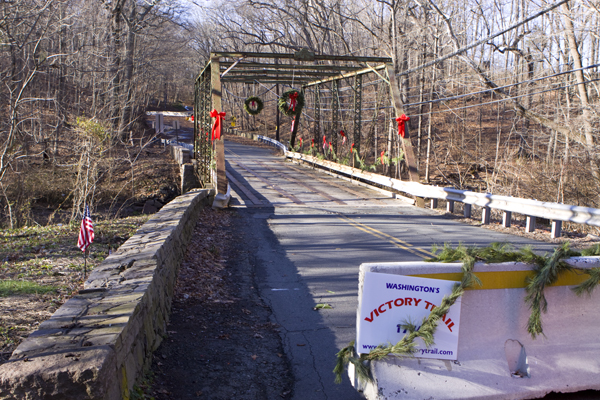
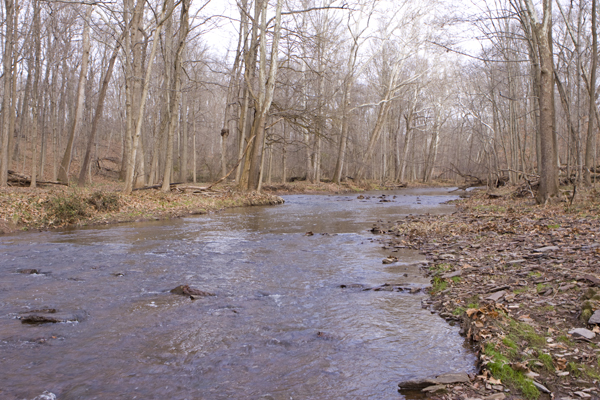
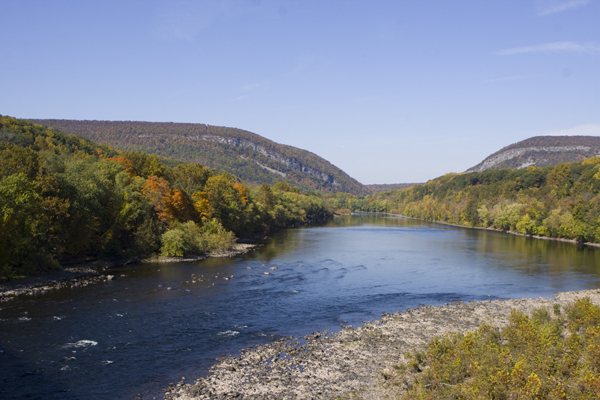
 1. Wetlands provided the largest dollar value of ecosystem services: $9.4 billion/yr for freshwater wetlands and $1.2 billion/yr for saltwater wetlands. The most valuable services were disturbance regulation ($3.0 billion/yr), water filtration ($2.4 billion/yr), and water supply ($1.3 billion/yr) for freshwater wetlands, and waste treatment ($1.0 billion/yr) for saltwater wetlands. (Disturbance regulation means the buffering of floods, storm surges, and other events that threaten things valued by individuals or by society as a whole.)
1. Wetlands provided the largest dollar value of ecosystem services: $9.4 billion/yr for freshwater wetlands and $1.2 billion/yr for saltwater wetlands. The most valuable services were disturbance regulation ($3.0 billion/yr), water filtration ($2.4 billion/yr), and water supply ($1.3 billion/yr) for freshwater wetlands, and waste treatment ($1.0 billion/yr) for saltwater wetlands. (Disturbance regulation means the buffering of floods, storm surges, and other events that threaten things valued by individuals or by society as a whole.) 2. Marine ecosystems provided the second-largest dollar amount of ecosystem services: $5.3 billion/yr for estuaries and tidal bays and about $389 million/yr for other coastal waters, including the coastal shelf out to the three-mile limit. (It should be noted that the fish and shellfish obtained from these ecosystems are covered elsewhere in this report and are not included in these totals.) Nutrient cycling (i.e., waste dilution and removal) was the most important service provided by marine ecosystems, with a value of $5.1 billion/yr.
2. Marine ecosystems provided the second-largest dollar amount of ecosystem services: $5.3 billion/yr for estuaries and tidal bays and about $389 million/yr for other coastal waters, including the coastal shelf out to the three-mile limit. (It should be noted that the fish and shellfish obtained from these ecosystems are covered elsewhere in this report and are not included in these totals.) Nutrient cycling (i.e., waste dilution and removal) was the most important service provided by marine ecosystems, with a value of $5.1 billion/yr. 3. Forests cover the largest area of any ecosystem type in New Jersey, and because of that the total value of the ecosystem services they provide is one of the highest at $2.2 billion/yr, excluding the value of timber. Habitat services are currently the most important of these services ($1.4 billion/yr); other important services provided by forests include water supply and pollination (about $238 million/yr each) and aesthetic and recreational amenities ($179 million/yr).
3. Forests cover the largest area of any ecosystem type in New Jersey, and because of that the total value of the ecosystem services they provide is one of the highest at $2.2 billion/yr, excluding the value of timber. Habitat services are currently the most important of these services ($1.4 billion/yr); other important services provided by forests include water supply and pollination (about $238 million/yr each) and aesthetic and recreational amenities ($179 million/yr). 4. Urban green space covers relatively little of New Jersey but has a relatively high dollar value per acre and provides an estimated $419 million of ecosystem services annually, principally aesthetic and recreational amenities ($361 million/yr). Ecoservice values for other types of urban land and for barren land were not investigated in this study.
4. Urban green space covers relatively little of New Jersey but has a relatively high dollar value per acre and provides an estimated $419 million of ecosystem services annually, principally aesthetic and recreational amenities ($361 million/yr). Ecoservice values for other types of urban land and for barren land were not investigated in this study.

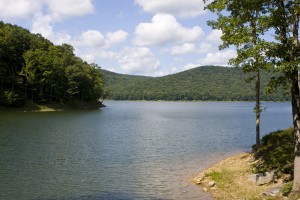




 Residents, led by then Council members Ed Meakem and Lisa Riggolio
Residents, led by then Council members Ed Meakem and Lisa Riggolio
